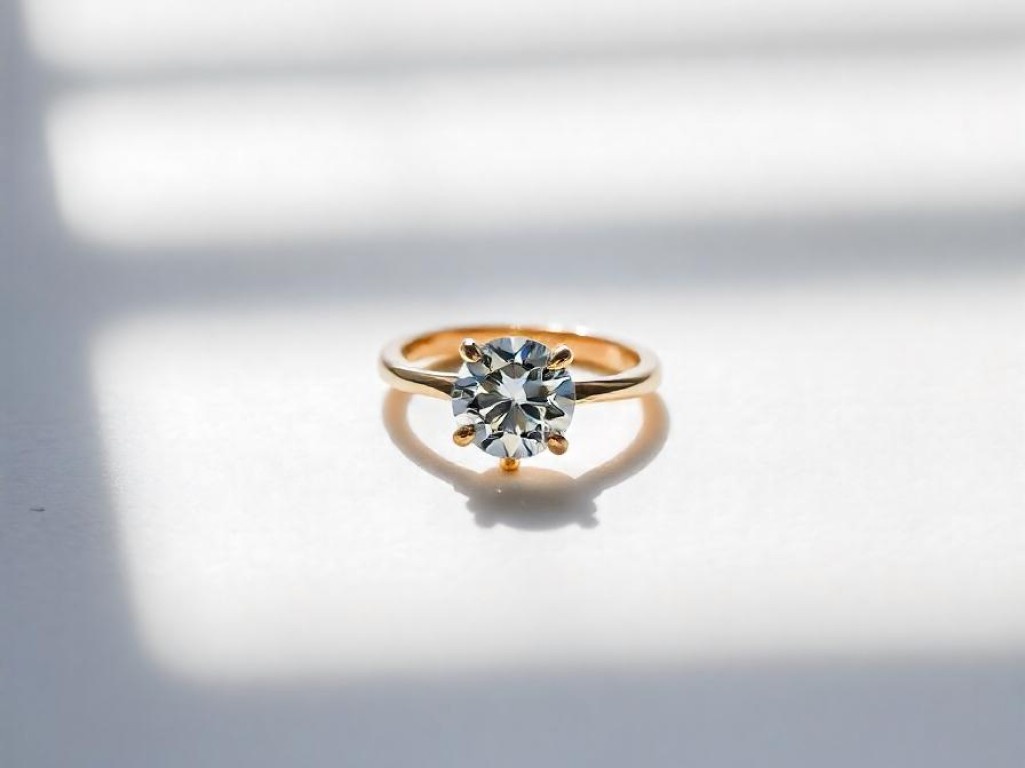When it comes to choosing a gemstone for an engagement ring, many people are familiar with the classic diamond. However, there are other options available that can offer a similar look and feel at a lower price point. One such option is the white sapphire.
In this article, we’ll delve into the world of white sapphires and compare them to diamonds. We’ll explore the pros and cons of each gemstone, as well as some other alternatives to natural diamonds.
What is White Sapphire?
White sapphire is a highly transparent and precious gemstone from the corundum mineral family. Unlike colored sapphires, which derive their color from trace minerals such as titanium, chromium, and vanadium, white sapphires are formed without these impurities, resulting in a pure, white or transparent appearance.
White sapphires are often referred to as the “stone of Gods” due to their metaphysical properties, which are believed to bring wealth, high self-esteem, and harmony in relationships. They are also appreciated for their affordability and durability, making them a popular choice for customising beautiful pieces of jewelry.

What is a Diamond?
Diamonds are formed from carbon that undergoes intense heat and pressure deep within the Earth’s surface over millions of years. Known for their exceptional hardness and brilliance, they are a classic choice for diamond engagement rings and fine jewelry. They are renowned for their pure, clear, sparkling appearance and are often colorless or lightly tinted.
White Sapphire vs Diamond: A Comparison
| Parameter | White Sapphire | Diamond |
| Composition | Pure form of corundum (aluminum oxide) | Single element carbon (C) |
| Hardness (Mohs Scale) | 9 | 10 |
| Color | White, slightly cloudy or milky | Clear, colorless or lightly tinted |
| Brilliance (Refractive Index) | 1.77-1.772 (nω), 1.760-1.763 (nε), birefringence 0.008 | 2.42 (at 500 nm) |
| Sparkle and Fire | Less brilliant, softer glow, less fire | Highly brilliant, sharp sparkle, significant fire |
| Durability | Slightly less durable, can be scratched[ | Extremely durable, only scratched by another diamond |
| Price | $38.62 to $772.48 per carat | Varies widely based on quality, $1672.96 to $12871.9 per carat |
| Clarity | May appear cloudy or dull, shows inclusions | Typically clear, transparent, and eye-clean |
| Maintenance | Attracts soap and dirt more easily | Less prone to dirt buildup |
| Alternatives | Often compared to cubic zirconia, but harder and retains color better | Unique, but alternatives include moissanite and lab-grown diamonds |
Durability
One of the most critical factors to consider when choosing between white sapphire and diamond is durability. Diamonds are the hardest natural substance known, scoring a 10 on the Mohs scale of hardness. This makes them highly resistant to scratches and wear, ideal for luxury jewelry.
White sapphires, while still very durable, score a 9 on the Mohs scale. This slight difference in hardness means that diamonds can withstand a bit more wear and tear than white sapphires. However, it’s important to note that the difference is marginal, and white sapphires are also quite durable and suitable for everyday jewelry.
Sparkle and Brilliance
The sparkle and brilliance of a gemstone are key factors in its appeal. Diamonds are known for their exceptional brilliance and fire, which is due to their high refractive index. This means that diamonds reflect light more intensely, giving them a sharp, radiant appearance.
White sapphires, on the other hand, have a softer and more subtle glow. Their sparkle is often described as silvery white-gray, lacking the rainbow colors that diamonds display. While both stones sparkle, the intensity and nature of their sparkle differ significantly.

Color Differences
Another significant difference between white sapphires and diamonds is their color. Diamonds are typically colorless or lightly tinted, providing a pure and clear appearance. White sapphires, however, can have a slightly paler or cloudy appearance. Some white sapphires may also show a pale blue hue due to minor impurities.
Metal Settings
The choice of metal setting can also impact the appearance of your gemstone. White sapphires tend to look particularly striking when paired with silver or platinum metals due to their paler color and softer appearance. They can also be set in yellow gold, although this may require extra care to maintain the metal.
Diamonds, being more versatile, can be set in a wider variety of metals without compromising their appearance. However, they often look best in settings that enhance their brilliance, such as platinum or rhodium plated white gold.
Styling and Versatility
Both white sapphires and diamonds can be styled in various ways to suit different tastes and occasions. However, diamonds are generally more versatile and can be set in a broader range of styles, from classic solitaires to elaborate pavé settings.
White sapphires, while less common in traditional settings, are gaining popularity for their unique appearance and affordability. They are particularly popular for engagement rings, as seen with celebrities like Kate Middleton and Katrina Kaif, who have chosen sapphires over diamonds for their engagement rings.
Engagement Rings and Everyday Jewelry
For engagement rings, the choice between white sapphire and diamond often comes down to personal preference and budget. If you are looking for a classic, timeless look with exceptional brilliance, a diamond might be the better choice. However, if you prefer a unique and affordable option with a softer glow, a white sapphire could be ideal.
For everyday jewelry, white sapphires offer a durable and stylish option that is easy on the budget. Their subtle sparkle makes them suitable for both casual and formal wear, while diamonds are often reserved for more special occasions due to their higher cost and greater brilliance.

Final Considerations
Before making your final decision, here are a few additional points to consider:
- Quality Factors: For both white sapphires and diamonds, the cut, diamond quality, and color are crucial. Opt for an Excellent or Ideal cut for maximum brilliance and light dispersion. Choose a stone that is eye-clean, and for color, select a stone that appears colorless or lightly tinted.
- Certification: Ensure that your gemstone is certified by a reputable organisation to guarantee its authenticity and quality.
- Maintenance: Regular maintenance is essential to keep your jewelry in good condition. Clean your jewelry regularly and have it inspected periodically to ensure the setting remains secure.
By carefully evaluating these factors, you can find the perfect type of gemstone that not only fits your budget but also reflects your personal style and preferences. Whether it’s the timeless brilliance of a diamond or the unique allure of a white sapphire, the right choice will make your jewelry piece truly special.







Leave a Comment